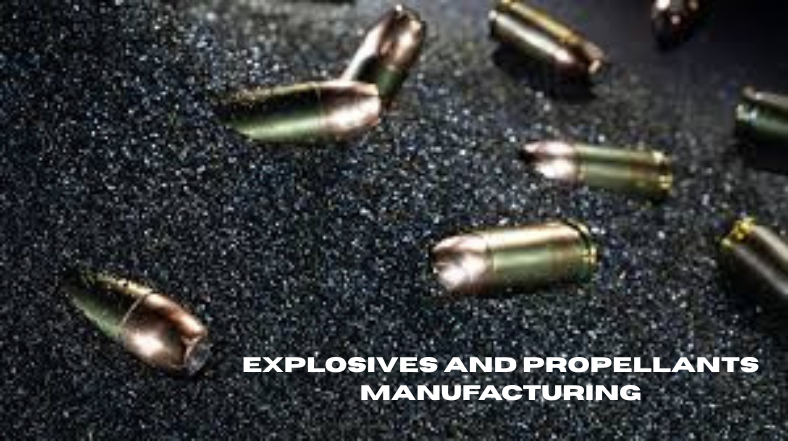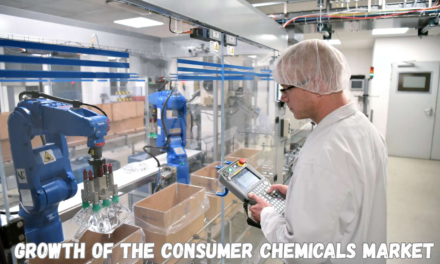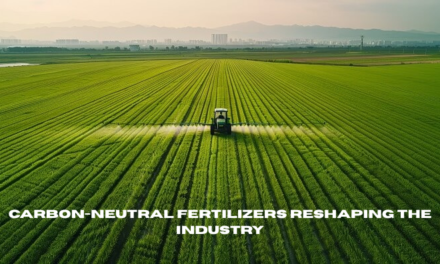The manufacture of explosives and propellants involves precision engineering, strict safety protocols, and specialized processes to ensure consistent quality, performance, and safety. While the specifics differ for explosives and propellants, both require controlled handling of reactive materials and adherence to stringent regulatory standards. Below is an overview of the key steps and methods used in their manufacturing:
Manufacturing of Explosives
1. Raw Material Preparation
- Key Inputs:
- Explosives are made from oxidizers, fuels, and additives.
- Common oxidizers: Ammonium nitrate, potassium nitrate.
- Fuels: Charcoal, aluminum powder, hydrocarbons.
- Purification:
- Raw materials are purified to remove impurities that could cause instability.
- Safety Precautions:
- Materials are handled in small, isolated batches to minimize the risk of accidental detonation.
2. Chemical Synthesis
- Common Processes:
- Nitration:
- Organic compounds (e.g., toluene, glycerol) are reacted with nitric acid or mixed acid (nitric and sulfuric acid) to introduce nitro groups.
- Example: Toluene is nitrated to form trinitrotoluene (TNT).
- Neutralization:
- Residual acids are neutralized using bases like sodium carbonate.
- Blending:
- Fuels, oxidizers, and stabilizers are mixed in precise ratios.
- Nitration:
- Reactor Types:
- Stirred-tank reactors and continuous-flow reactors are commonly used for controlled reactions.
3. Crystallization and Granulation
- Purpose:
- Crystallization ensures uniform particle size and stability.
- Granulation makes the explosive easier to handle and improves performance.
- Methods:
- Controlled cooling, evaporation, or precipitation techniques.
4. Drying
- Process:
- Explosive crystals or granules are dried using low-temperature dryers to avoid accidental ignition.
- Safety:
- Drying is conducted in explosion-proof chambers with strict temperature control.
5. Shaping and Packaging
- Shaping:
- Explosives are shaped into desired forms, such as pellets, sticks, or slabs.
- Extrusion or pressing is used for solid explosives.
- Packaging:
- Packaged in shock-resistant and moisture-proof containers to ensure safe storage and transport.
Examples of Explosive Production
- TNT:
- Nitration of toluene followed by neutralization and crystallization.
- ANFO (Ammonium Nitrate-Fuel Oil):
- Mixing ammonium nitrate granules with a specific percentage of fuel oil.
- Plastic Explosives:
- Blending high explosives like RDX with plasticizers and binders.
Manufacturing of Propellants
1. Solid Propellants
- Raw Materials:
- Oxidizers: Ammonium perchlorate, ammonium nitrate.
- Fuels: Aluminum powder, hydrocarbons.
- Binders: Hydroxyl-terminated polybutadiene (HTPB), polyurethane.
- Mixing and Casting:
- Components are mixed to form a homogeneous slurry.
- In cast composite propellants, the slurry is poured into molds to solidify.
- Curing:
- Heat or chemical curing hardens the propellant mixture into its final form.
- Extrusion:
- In double-base propellants, a nitrocellulose-nitroglycerin paste is extruded into desired shapes.
2. Liquid Propellants
- Fuel and Oxidizer Preparation:
- Fuels like RP-1 (kerosene) and liquid hydrogen are refined to high purity.
- Oxidizers like liquid oxygen (LOX) or nitrogen tetroxide (N₂O₄) are cooled and stored under cryogenic conditions.
- Storage and Handling:
- Specialized tanks maintain fuels and oxidizers at precise temperatures and pressures.
- Blending and Additives:
- Additives (e.g., anti-corrosion agents, stabilizers) are mixed to enhance performance.
3. Hybrid Propellants
- Solid Fuel Preparation:
- Polymer-based solid fuels like polyethylene are cast or extruded.
- Oxidizer Integration:
- Liquid or gaseous oxidizers (e.g., liquid oxygen) are stored separately and mixed during operation.
4. Propellant Grain Design
- Purpose:
- Grain geometry is engineered to control the burn rate and thrust profile.
- Techniques:
- Casting grains with precise internal patterns, such as star shapes or cylindrical holes, for controlled combustion.
5. Quality Control
- Testing:
- Propellants are tested for burn rate, energy output, and stability under various conditions.
- Analytical Techniques:
- Thermal analysis (DSC, TGA), chemical composition analysis, and mechanical testing.
Examples of Propellant Production
- Composite Propellants:
- Mixing ammonium perchlorate, aluminum powder, and HTPB binder, followed by casting and curing.
- Monopropellants:
- Synthesizing hydrazine or hydroxylammonium nitrate (HAN) for spacecraft propulsion.
- Cryogenic Propellants:
- Refining and storing liquid hydrogen and liquid oxygen for rocket engines.
Safety Measures in Manufacturing
- Controlled Environments:
- Manufacturing facilities are designed with explosion-proof chambers and remote-controlled processes.
- Small Batch Processing:
- Reduces risk by handling limited quantities of reactive materials at a time.
- Inert Atmospheres:
- Prevents unwanted reactions by maintaining non-reactive gases like nitrogen in production areas.
- Automated Systems:
- Reduces human exposure to hazards by using robotics and automation.
- Regular Testing:
- Ensures the stability of raw materials and finished products.
Quality Control and Testing
- Purity Analysis:
- Ensures raw materials meet required specifications (e.g., absence of impurities in ammonium nitrate).
- Thermal Stability Testing:
- Evaluates the decomposition and ignition behavior of explosives and propellants.
- Performance Testing:
- Burn rate, energy output, and thrust generation are measured.
- Compatibility Testing:
- Ensures components (e.g., oxidizers and fuels) do not react prematurely.
Regulatory Oversight
- Safety Regulations:
- Compliance with standards such as OSHA (Occupational Safety and Health Administration) for workplace safety.
- Environmental Regulations:
- Adherence to guidelines for waste disposal and emissions, such as REACH in the EU.
- Transport Regulations:
- Packaging and shipping explosives and propellants under regulations like the UN Model Regulations on the Transport of Dangerous Goods.
Conclusion
The manufacturing of explosives and propellants is a highly specialized process that balances efficiency, precision, and safety. Advances in automation, material science, and green chemistry are improving the sustainability and performance of these materials while maintaining stringent quality and safety standards. These advancements ensure their effective use across diverse industries like aerospace, defense, mining, and construction.
Hashtags
#ExplosivesManufacturing #PropellantManufacturing #HighEnergyMaterialsManufacturing #ExplosivesProduction #PropellantProduction #ManufacturingProcesses #ChemicalManufacturing #PropellantSynthesis #ExplosivesSynthesis #AdvancedManufacturingTech #PrecisionManufacturing #IndustryStandards #SafetyPractices #ManufacturingRegulations #HazardousMaterials #MilitaryExplosives #RocketPropellant #AerospaceProduction #DefenseIndustry #AmmunitionManufacturing #EcoFriendlyExplosives #SustainablePropellant #GreenManufacturing #LowEmission #CleanEnergyPropellants

















